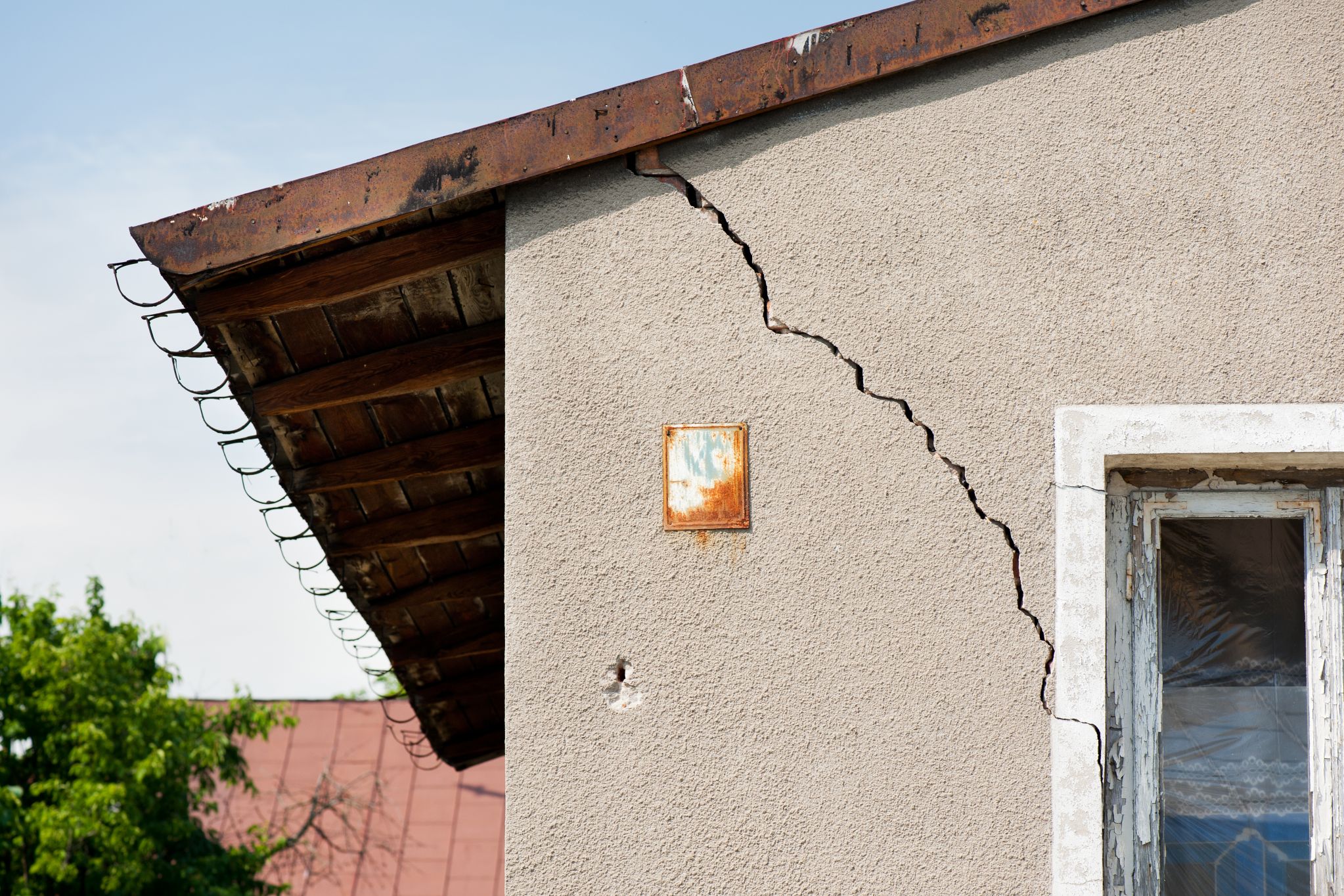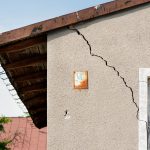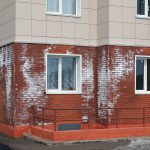Cracks in external walls come in various forms, including horizontal hairline cracks, vertical cracks, and more. Horizontal hairline cracks in walls are typically caused by the natural settling of a building. Vertical cracks in outside walls may indicate foundation issues or structural movement.
Importance of Maintaining the Exterior Walls of a Building
Maintaining the exterior walls is essential for several reasons. First and foremost, it enhances the overall appearance and curbs appeal of your property. Additionally, regular maintenance can prevent water infiltration, which can cause further damage and compromise the structural integrity of the building. By promptly addressing cracks in the external walls, you ensure the longevity and value of your property.
Common Causes of Exterior Wall Cracks
Various factors contribute to the occurrence of cracks in external walls. Poor construction practices, moisture infiltration, natural disasters, and exposure to harsh weather conditions are the primary culprits. Horizontal hairline cracks in walls can result from inadequate reinforcement or settling of the building. Vertical cracks in outside walls may be caused by foundation issues or structural movement. To prevent external wall cracks, it is crucial to address these underlying causes and take proactive measures to ensure the stability and durability of your house.
Poor Construction Practices
Poor construction practices play a significant role in the development of cracks in external walls. Insufficient reinforcement, improper mixtures of building materials, or inadequate curing can lead to structural weaknesses. These flaws can manifest as horizontal hairline cracks in walls or vertical cracks in outside walls.
Moisture
Moisture infiltration is a common cause of cracks in external walls. Water can seep into the building materials, causing them to weaken and expand. When the moisture evaporates, it leaves behind gaps and cracks in the walls. These cracks may appear as horizontal hairline cracks or more substantial fissures in the external walls. Read about waterproofing solutions.
Natural Disasters
Natural disasters such as earthquakes, floods, and severe storms can subject buildings to intense stress, resulting in cracks in external walls. The immense forces generated during these events can cause structural movement and deformation, leading to vertical cracks in outside walls or more severe damage.
Exposure to Harsh Weather Conditions
Exterior walls are exposed to various harsh weather conditions, which can contribute to the formation of cracks. Temperature fluctuations, especially in regions with freeze-thaw cycles, can cause materials to expand and contract, leading to cracks in external walls. Prolonged exposure to ultraviolet (UV) radiation can also degrade the building materials, making them more susceptible to cracking.
Types of Exterior Wall Cracks
Exterior wall cracks can be classified into different types based on their direction and appearance. Vertical cracks in walls run straight up and down and can indicate structural issues. Horizontal cracks in walls typically occur parallel to the ground and can signal foundation problems. Diagonal cracks in walls slant across the surface and may result from settling or structural movement. Understanding these types of cracks is essential for effective wall crack repair and finding suitable solutions. Read about crack fill paste and crack fill powder.
Vertical Cracks
Vertical cracks in walls are a common issue that homeowners may encounter. These cracks run vertically from the foundation to the roofline and can be an indication of structural problems.
Definition and common causes
Causes of vertical cracks in exterior walls include foundation settling, soil movement, or inadequate structural support. To address vertical cracks, it is crucial to consult a professional and implement appropriate wall crack repair techniques such as crack seal for walls or using wall crack filler.
Horizontal Cracks
Horizontal cracks in walls are a cause for concern as they can indicate significant structural issues. These cracks typically appear parallel to the ground and may be caused by foundation movement, expansive soils, or hydrostatic pressure.
Definition and common causes
Horizontal cracks can compromise the stability of the building and should be promptly addressed. Seeking professional assistance for wall crack repair and employing suitable solutions is essential to ensure the integrity of the exterior walls and prevent further damage.
Diagonal Cracks
Diagonal cracks in walls slant across the surface and can be a sign of structural problems. Consulting experts and filling cracks in exterior walls with suitable materials can help mitigate the issue and ensure structural stability.
Definition and common causes
These cracks may occur due to foundation settling, soil pressure, or structural movement. Diagonal cracks can be more common in older buildings or in regions with seismic activity. Understanding the causes behind diagonal cracks is crucial for finding appropriate wall crack repair solutions.
Tips to Fix Exterior Wall Cracks

- Identify the type and severity of the crack before proceeding with repairs.
- Clean the crack and remove any loose debris or old filler material.
- Choose the appropriate wall crack filler or crack seal for walls based on the type of crack.
- Apply the filler or sealant according to the manufacturer’s instructions.
- Allow the repair to dry and cure properly before painting or applying a protective coating.
Inspections and Assessment
Before repairing cracks in external walls, conduct a thorough inspection to identify the extent of the damage. Assess the underlying causes and potential structural issues. Seek professional advice if needed to ensure accurate assessment and suitable repair solutions. This will help determine the best approach for effective exterior wall crack repair and prevent further damage.
Hiring a Professional
For complex or extensive exterior wall cracks, it is recommended to hire a professional with experience in wall crack repair. Professionals have the expertise to assess the situation, identify underlying issues, and employ appropriate repair techniques. Their knowledge of suitable wall crack fillers, crack seal for walls, and repair materials ensures a long-lasting and structurally sound solution to the exterior wall cracks.
Tools and Materials
Depending on the type and severity of the crack, the tools and materials required for wall crack repair may include a trowel, putty knife, wire brush, chisel, sandpaper, caulking gun, and safety equipment. In terms of materials, options range from epoxy-based fillers for larger cracks to flexible sealants for smaller ones. Selecting the right tools and materials is crucial for a successful exterior wall crack repair.
Types of Materials Needed for Different Types of Cracks
The choice of materials for repairing cracks in external walls depends on the type of crack. For vertical cracks, epoxy or polyurethane-based fillers are commonly used. Horizontal cracks may require crack stitching techniques or carbon fiber reinforcement. Diagonal cracks often necessitate flexible sealants or mortars. Consult professionals or product guidelines to determine the appropriate materials for specific crack types.
Tools Required for Wall Crack Repair
To repair exterior wall cracks, you may need tools such as a trowel or putty knife for applying fillers, a wire brush or chisel for cleaning the crack, sandpaper for smoothing the surface, and a caulking gun for dispensing sealants. It is important to have safety equipment like gloves and goggles to protect yourself during the repair process. Choose tools suitable for the specific repair technique.
Repair Techniques
Various repair techniques can be employed for exterior wall crack repair. These include filling the crack with a suitable filler or sealant, applying crack stitching to reinforce the cracked area, or using carbon fiber reinforcement for horizontal cracks. The choice of technique depends on the type and severity of the crack, and consulting professionals will help determine the most effective approach for long-lasting results.
Step-by-step Instructions for Repairing Different Types of Cracks
- Identify the type of crack (vertical, horizontal, or diagonal).
- Clean the crack and remove debris.
- Apply the appropriate filler or sealant for the specific crack type.
- Follow the manufacturer’s instructions for application and drying time.
- Smooth the repaired area and allow it to cure before further treatment.
Precautions and Safety Measures
- Wear appropriate safety gear, including gloves and goggles, during the repair process.
- Work in a well-ventilated area to avoid inhaling fumes from sealants or fillers.
- Follow manufacturer instructions for handling and disposal of materials.
- Use caution when working on ladders or elevated surfaces.
- If unsure or dealing with extensive damage, consult a professional for assistance and guidance.
FAQs
What is the best way to fix cracks in walls?
The best wall crack solution is to identify the underlying cause, clean the crack, and apply an appropriate wall crack solution such as a filler or sealant. It is recommended to consult professionals for extensive or structural damage.
Which instrument is used for measuring cracks in wall?
A crack gauge or crack monitor is commonly used for measuring cracks in walls. The crack gauge typically consists of a calibrated scale or dial that allows for precise measurements, enabling professionals to assess the severity of the crack and determine the appropriate repair approach.
What is a normal wall crack?
A normal wall crack refers to a crack in a wall that is considered common and does not indicate significant structural issues.
What kind of wall cracks are bad?
Wall cracks that are wide, extensive, or accompanied by other signs of structural damage are generally considered bad and require immediate attention.


 Get in Touch
Get in Touch
